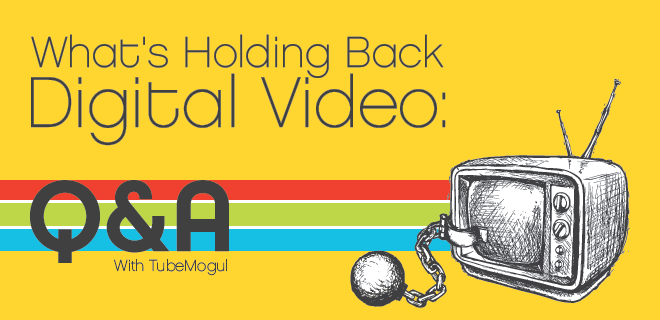
The latest TubeMogul report on video RTB in the UK found that inventory available for RTB grew at a fleet 13.8% rate per month during the second quarter of 2012, maxing out at 29.9 million streams per day in July. However, average CPM took a nose dive, from £6.47 in the first quarter to £4.97 in the second. John Hughes, TubeMogul cofounder and President of Products, spared a few minutes to discuss the speed of video RTB adoption in the UK, those pesky video metrics and the factors holding back online video monetization.
According to your report video RTB is on the rise in the UK – why do you think video has adopted programmatic trading so quickly when display took much longer?
Display is primarily a direct-response medium (click this, like that), while video is more akin to television in branding value and is about persuading people on the long-term value of a brand. As such, video advertising appeals to a different type of advertiser – namely, brand marketers – and they are leading this charge.
The video market is lucrative but not as much as it probably should be considering the volume of video being watched online – what’s standing in the way?
Video is expanding rapidly and its struggles are often exaggerated, but we agree there are issues holding it back. One barrier is simply that marketers do not always know exactly what they are buying and – more important — do not have control at all times over who is seeing an ad where, leading to a lot of waste.
Since inventory is often bundled, marketers are also accidentally buying less-premium inventory sometimes. Examples include “fake pre-roll,” which are video ads that viewers did not intend to watch that autoplay in small players when a viewer loads a homepage, and video ads sold as “viral seeding” or the like that are actually delivered as incentivised social game units or display units of varying quality.
Real-time buying can change this game by offering marketers total control. Brand marketers can evaluate impression-by-impression, which allows them to constantly tweak budgets, audience mix, sites they are advertising on and more based on audience data. They can fluidly shift budgets based on performance rather than issuing RFPs and assessing vendors quarter-by-quarter.
Is video using the right metrics for it to prosper further?
It depends where you are buying – not always. Often, video is sold on completions, clicks or even “viral views.” But what a brand marketer cares about actually cuts much deeper, like is someone remembering my brand and do they intend on making a purchase in the next few months. Lifting these brand survey metrics is the key to video’s continued growth.
Video RTB CPMs are declining – why is this? Is it simply finding equilibrium?
Inventory in the UK is expanding rapidly (almost three times the rate of US expansion, for instance), and this is likely the main culprit. As you note, it is a relatively young medium and learning is still happening on both the buy and sell-side.
What should marketers be looking out for when purchasing video? What defines an astute buy?
A big part of branding is context, and marketers should be able to pick the exact sites, audiences and regions where your ad is running and be able to control these variables based on real-time data. Anything else leads to shenanigans as we outline above.
The future of video looks to be programmatic/RTB-centric – is the same true for all media?
We believe the answer is yes, and private exchanges where publishers control pricing and do not compete with their own internal salesforces will help us get there. We see ourselves as one buying platform for all video screens.
 |
Macro-level changes are coming, and you can sieze the opportunities that follow at OPS NY. This event will bring together digital advertising leaders and ops professionals to discuss a rapidly evolving landscape and develop strategies for monetization. Register today for OPS NY which will be held Oct. 4, 2012. |